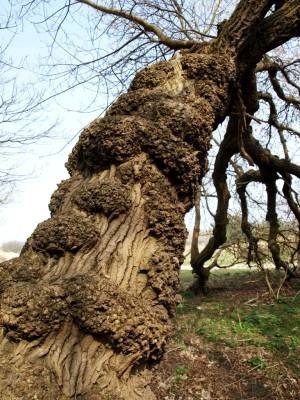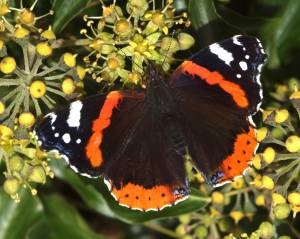Dr Phil Smith’s Wildlife Notes
October 2008
A rare excursion “over the water” on 6th October led indirectly to an exciting discovery at Formby. Pat Lockwood and I were invited by Hilary Ash to visit Wirral habitats similar to our own Birkdale Green Beach. While there, we were shown a rare Native Black Poplar (Populus nigra ssp. betulifolia) in a Hoylake garden. This reminded Pat that the late Vera Gordon had identified this tree on the National Trust estate some years ago. So, armed with Dr Ash’s crib-sheet of identification features, we tracked down the specimen a few days later. Sure enough, there stood a convincing looking Black Poplar on the edge of a deciduous woodland south of Victoria Road carpark. Unexpectedly, however, there were another 80 or so similar trees in the adjacent woodland and more on field boundaries around the nearby Asparagus fields. Exploration further afield located more trees at Ravenmeols in the Firwood area. Altogether, we mapped nearly 300 Black Poplars; some are huge with massive down-curving branches that have rooted into the ground, sending up new shoots that have become large trees in their own right.

Reg Yorke tells me the poplars were planted as a “nurse-crop” to protect the original conifer plantings over 100 years ago. They were then known as “Frenchmen”. This calls into question the identity of out trees, as several hybrid poplars were developed in France in the 19th century. These closely resemble the Native Black Poplar, making identification a bit of a nightmare; so we will have to wait until next spring/summer to be sure that we have the genuine article.
Now a rare tree in northwest England, the Native Black Poplar is mainly found growing wild south of the Severn/Wash line. However, it was widely planted further north, especially around Greater Manchester, where it is known as the Manchester Poplar. These trees are now threatened by a virulent fungus which is rapidly killing them off. As yet, the Formby poplars seem unaffected, though a few have died, probably of old age. If ours prove to be Native Black Poplars, they will constitute a nationally important population.
The cooler, unsettled autumn weather meant that insect activity quickly declined, though a few Migrant Hawker and Common Darter dragonflies hung on until mid-month. Red Admiral butterflies were a welcome sight nectaring on Michaelmas-daisies and Ivy flowers.

Gales at the start of October brought large numbers of Leach’s Petrels into Liverpool Bay; I even managed to catch up with one of these ocean wanderers on Ainsdale Beach. Martin Mere continued to be a good place to see birds of prey, several Marsh Harriers including a fine male being a particular attraction. The usual mass-arrival of Pink-footed Geese from Iceland and Greenland was heralded by noisy skeins heading west over my home to their shore roosts. This month’s influx was exceptional, the co-ordinated count producing an October record of over 51,000. Many of these birds will already have headed further south to the harvested sugar-beet field of Norfolk. One fellow-traveller was a Ross’s Goose which breeds in Arctic Canada. This is a smaller version of the Snow Goose, its mainly white plumage making it stand out amongst the Pinkfeet when I caught up with it on Downholland Moss. However, the origin of such birds is always a matter for debate as so many are kept in captive collections.
